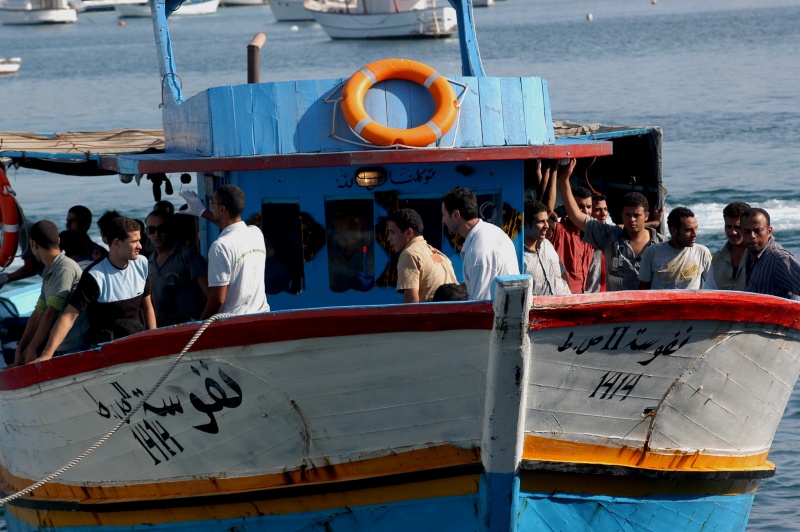Alliance for Historical Dialogue and Accountability fellow Lura Limani reflects on what stories of migrants, as collected by Professor Luisa Passerini’s Bodies Across Borders in Europe project, can teach us about European identity.
During an informal talk with Oral History MA students, visiting Professor Luisa Passerini, who received a European Academies award by the European Commission in 2014, was asked whether she identified as European. She sighed before explaining how her identification with Europe had more of an utopian tint - she did not identify with Europe as it was, but she was European in as far as she was convinced that a better Europe was possible.
“I've always worked, like many other Europeanist activists...to imagine a different Europe,” said Passerini, before adding that these days, however, she was pessimistic about its prospects.
The feeling of pessimism about the future of a European Union, an idea which was born in the ashes of the Second World War, is far too familiar to me. As a Kosovar, I’m used to the feeling of liminality: although part of the European continent, Kosovo is not a member of the European Union and I cannot even travel to EU countries without a visa. Nevertheless, like its neighbors, Kosovo’s development strategies aspire to bring the country as close as possible to EU standards with the hope of some time in the future becoming a full member. EU officials have waved this so-called ‘carrot’ for years at the Balkans countries in order to maintain peace and stability in a region that came out ravaged from the 1990s wars.
But those hopes of EU enlargement are diminishing day by day. I woke up on June 24 of last year to find, to my horror, notification upon notification with the Brexit referendum results (51% of the UK had voted leave). With Euroscepticism experiencing a rise in the past few years, a looming hard Brexit, and with the right-wing and Eurosceptic party Alternative for Germany, AfD, becoming the third largest party in Germany’s federal parliament, it is difficult to imagine anyone uncomplicatedly identifying as European even in its capital, Brussels.
Passerini might be right, though: Perhaps being European entails striving for a better Europe. an active identification with the ideals of the union that in fact might resonate most with those who are stuck outside of Fortress Europe: those fleeing war, famine, and environmental disasters. And it is exactly these people that Passerini and a team are interviewing for the ongoing project titled Bodies Across Borders in Europe. While, until the findings are complete next year, we can only speculate on what the project’s final results will reveal, from the details discussed during Professor Passerini’s informal talk and lecture at the Oral History MA Workshop Series, it seems very likely that the stories of migrants and their unfinished journeys to Europe can teach us a thing or two about what sustains hope in face of disaster.
The ongoing project seems almost a natural extension of Passerini’s body of work, since 1999: she wrote on love and the idea of Europe (1999, 2002, 2009), as well as on European identity (2012), and even looked at stories of women migrants from eastern to western Europe (2010). In the latter, titled Women Migrants from East to West: Gender, Mobility and Belonging in Contemporary Europe, Passerini suggests that interviews with women from both western and eastern Europe elucidate the oscillation between the Europe representing certain values (civilization) and the European Union (p. 257). But at the same time, how these women identify with Europe also is telling of the “artificial nature of a European identification” and this is what opens up the potential of “de-territorializing” Europe and “envisaging its connections with Mediterranean, African and Middle-Eastern countries” (p.261).
BABE might be the next step in the direction of ‘de-essentializing European values’ and possibly discovering the plasticity of Europeanness once again by looking at identity from a new angle.
During the talk, Passerini modestly admitted that interviewing refugees was not really an original idea - after all a record 1.3 million refugees arrived in Europe in 2015 and many have interviewed them. (Some have had remarkable results in capturing their experiences of trauma, alienation as well as struggles to break free from their social restrictions and adapt to the new context.)
But, unlike others, Passerini’s team asks migrants to tell their history of migration, and even try to draw and respond artistically to this experience. This has proven to be somewhat of a problem - the project will be archived, but as oral historians they are having to develop new tools to archive videos, photographs and art pieces, likes drawings, alongside interviews.
What Passerini revealed about the project is indicative of a future trove containing narratives of terrifying journeys that reveal a stratified world, fragmented by political, social and economic conditions. Furthermore, by being inter-subjective, oral history interviews might also enable us as scholars to reconstruct a shared vision, built within the ephemeral encounter between the interviewer and interviewee, recorded in the dialogic interview itself. As such, the migration crisis, and this engagement with it, have a lot to teach us about Europe and what it means to arrive on the European shore, carrying most of the time no belongings and a lot of illusions about the safe haven that Europe ambivalently is (the surge of migrants has also been met with attacks).
Being at a turning point, Europe might not live up to its own dreams. These interviews and collected materials made in such a pivotal moment might be a journal of not of only individuals in flux, but a continent in an upheaval. The oral and visual materials that Passerini’s team are currently collecting are important exactly because they represent an ongoing discussion about Europe’s nature: whether it’s an idea, a territory, a civilization, or a mere apparition of any of these.
To learn more about BABE project and follow their work in progress click here.

